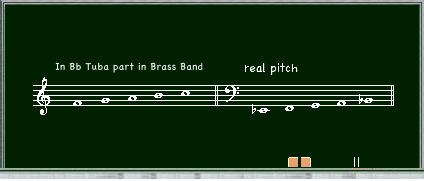Some teachers were confused when they bought sheet music for a British brass band because the trombones, euphoniums, and basses were written in treble clef, and the condensed score (a score arranged in two or three lines like piano scores) was written one note higher than the actual pitch.
In Japan, some people still call wind ensembles brass bands, but the brass bands mentioned above are ensembles of only brass instruments and percussion.
In wind ensembles, the euphonium part may have music in C (actual pitch) and in Bb (transposed). The music may also be written as (B.C) and (T.C), with B.C.is Bass Clef and T.C.is Treble Clef, and they are written in the actual pitch and transposed pitch, respectively.
An alto horn, like an alto saxophone, produces a major sixth lower than the score.
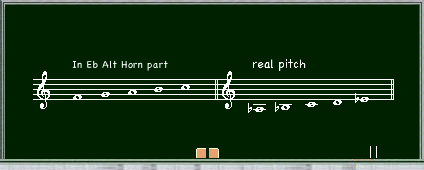
Even though it's a same in Eb, a Eb cornet produces a minor third higher than the score.
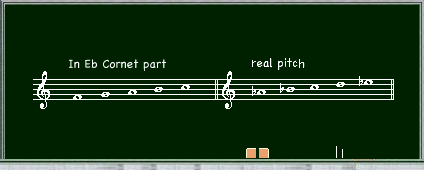
A trombone, baritone, and euphonium in Bb produce a note one octave and one note (major second) lower than the score.
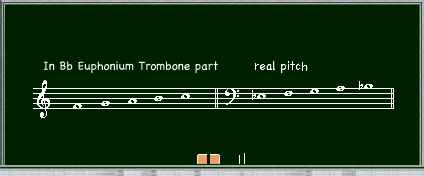
A bass in Eb produces a note one octave and a major sixth lower than the score.
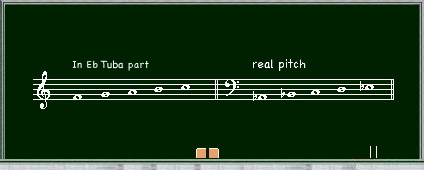
A bass in Bb will sound two octaves lower than the score.
